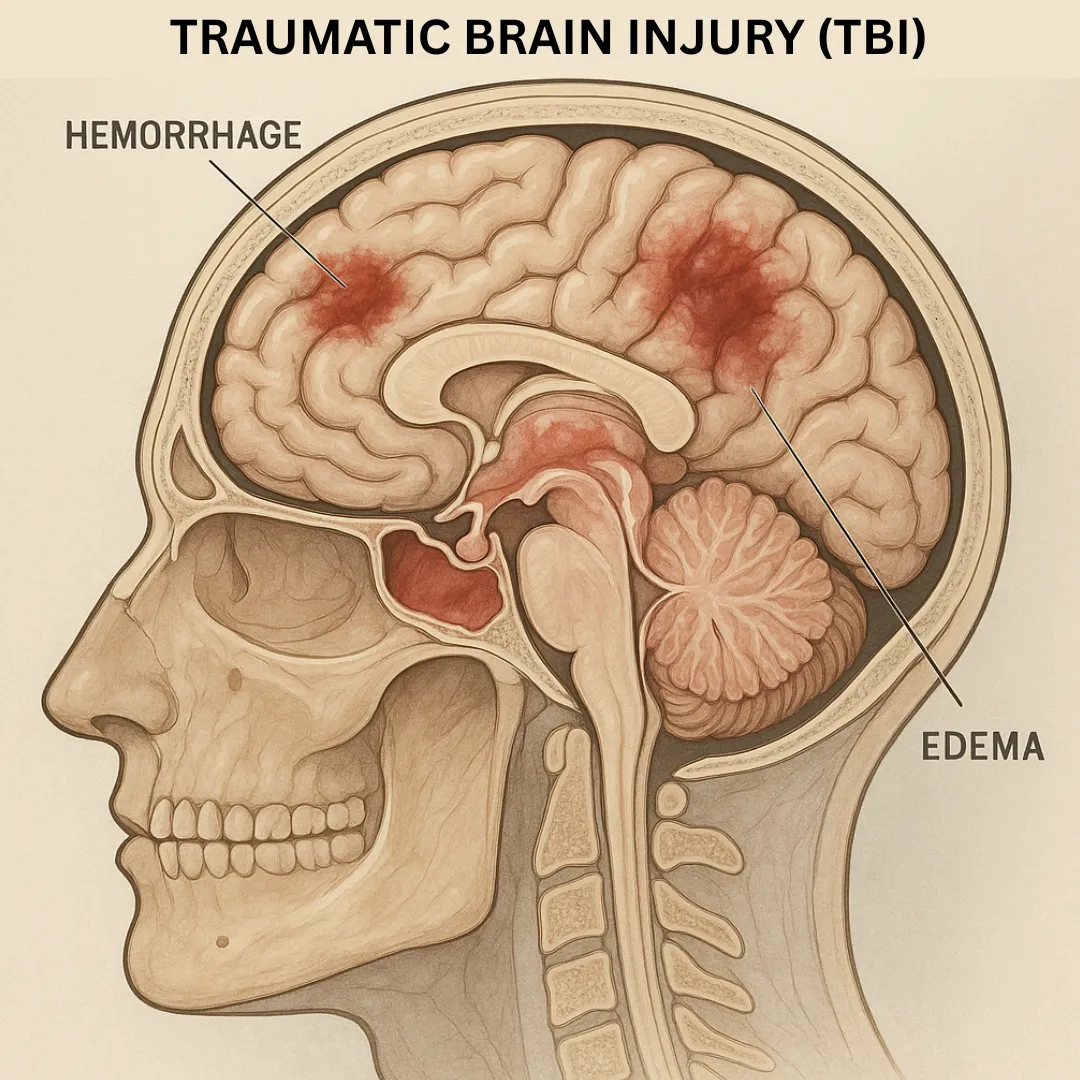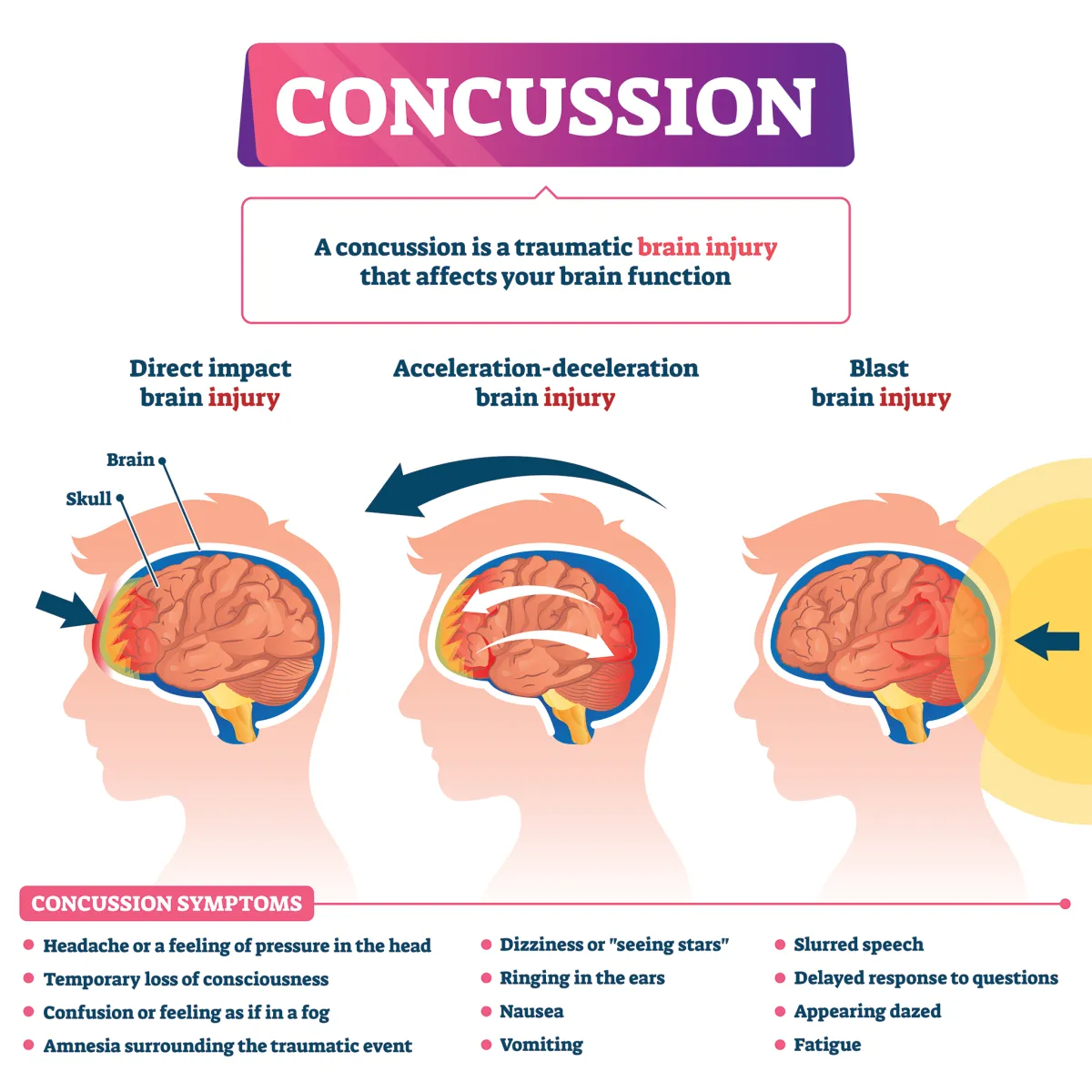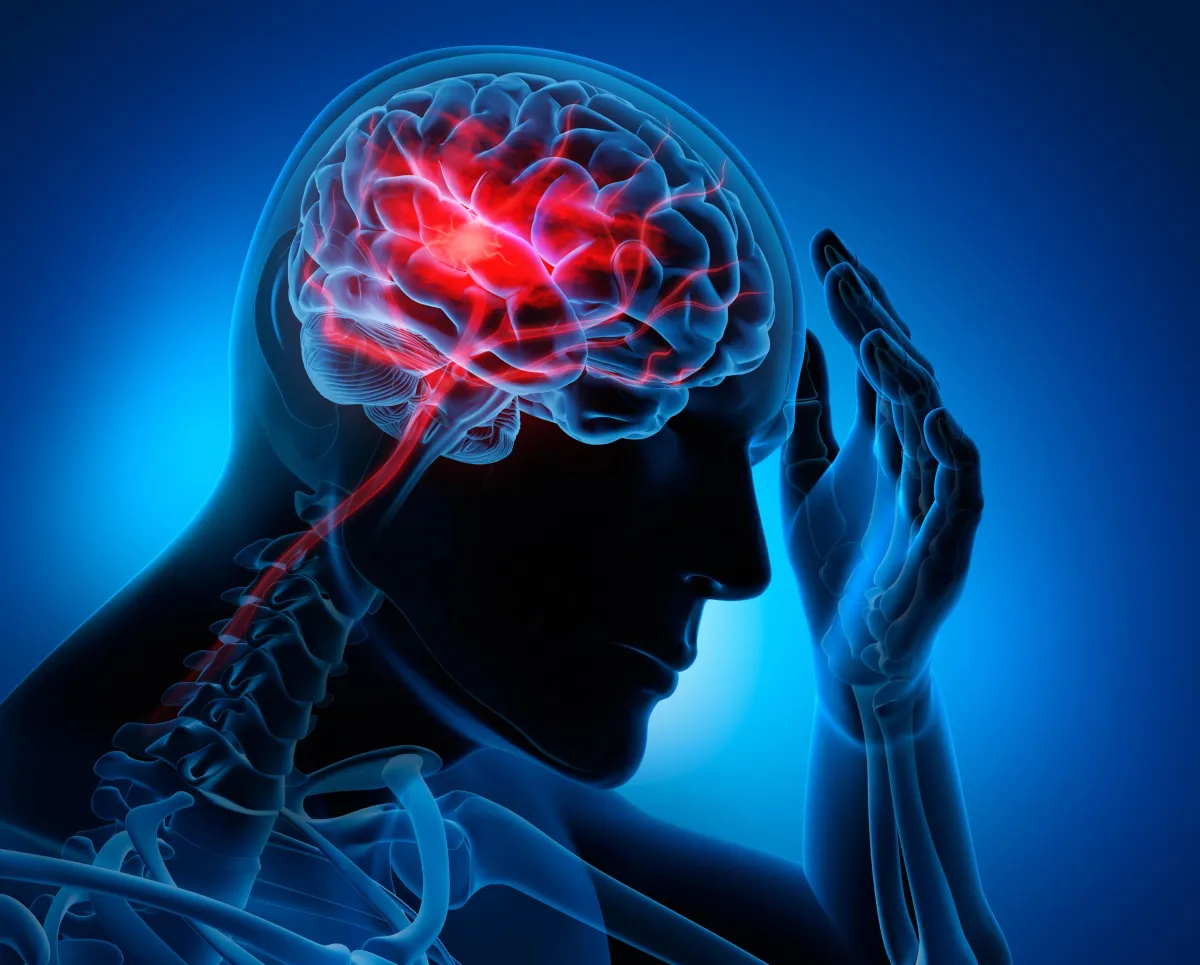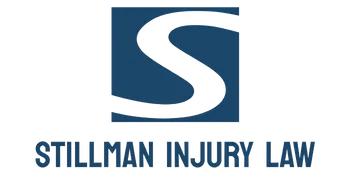TBI and Concussions: What You Need to Know
A sudden jolt or blow to the head can disrupt how your brain functions. These events, often called traumatic brain injuries, range from mild to severe. Even minor incidents like slipping or bumping your head during sports may lead to long-term problems if ignored.

External forces such as car crashes, falls, or direct impacts are common causes. Symptoms might appear immediately or develop over time, affecting memory, balance, or mood. Early medical care is crucial to reduce risks and improve recovery outcomes. At Stillman Injury Law, we understand how overwhelming these situations can be. Our Lake Worth team specializes in supporting those affected by head injuries. We fight tirelessly to secure fair benefits while you focus on healing.
This article will guide you through causes, warning signs, and recovery strategies. You’ll also learn how to protect your rights after an accident. Let’s explore this vital information together in simple, actionable terms.
Key Takeaways of TBIs and Concussions
Traumatic brain injuries disrupt normal brain function and vary in severity.
Common causes include vehicle accidents, falls, and sports collisions.
Immediate medical attention improves long-term recovery chances.
Legal support helps navigate insurance claims and healthcare challenges.
Upcoming sections detail symptoms, treatments, and preventive measures.
Overview of Traumatic Brain Injury and Concussions
Physical trauma to the skull often leads to disruptions in neurological functions. These events, medically termed traumatic brain injuries, occur when external forces damage brain cells or affect chemical processes. Concussions represent the most common type, typically caused by sudden movements like whiplash or direct hits.

Breaking Down the Basics
A traumatic brain injury involves harm from blows, jolts, or penetrating objects. Concussions are milder forms where brain function temporarily changes. Unlike fractures or bruises, these issues often hide beneath the surface – 15% of patients report lingering memory problems three months post-injury according to CDC data.
Why Awareness Matters: Over 2.8 million emergency visits yearly stem from head trauma incidents. Beyond physical health risks, untreated cases can complicate insurance claims or workplace benefits. At Stillman Injury Law, we’ve seen how delayed diagnosis or poor documentation creates hurdles for families seeking fair compensation. Our team prioritizes clear communication about medical findings and legal rights. Whether it’s a sports collision or car accident, we help clients connect proper treatment plans with strong compensation strategies. Let’s ensure your recovery journey includes both healing and justice.
Exploring TBI and Concussions: Causes and Mechanisms. Understanding how head injuries occur helps prevent them and strengthens legal cases. Let’s break down the science behind these events and their real-world consequences.
Common Causes: Falls, Vehicle Accidents, and More
Slips, crashes, and collisions top the list of injury triggers. The CDC reports falls cause nearly half of all brain-related hospitalizations, especially among older adults and children. Car crashes rank second, often involving rapid acceleration-deceleration forces that jolt neural tissue.
Other frequent scenarios include:
· Sports impacts (football, soccer)
· Workplace accidents (construction zones)
· Violent assaults
How External Forces Impact Brain Function
When your head suddenly stops moving – like during a crash – your brain keeps traveling. This motion stretches or tears delicate cells, disrupting communication pathways. Even without visible damage, chemical imbalances can trigger headaches, dizziness, or confusion.
Consider these key mechanics:
· Rotational forces: Twisting motions damage brainstem areas
· Direct blows: Localized trauma risks bleeding or swelling
· Blast waves: Pressure changes harm blood vessels
At Stillman Injury Law, we analyze accident physics to build strong compensation cases. We have an expert accident reconstructionist on staff who has been analyzing motor vehicle accidents for over 20 years. Whether it’s a rear-end collision or unsafe property conditions, we pinpoint how forces caused harm. This approach ensures medical costs and lost wages get covered fairly.
Recognizing the Signs and Symptoms
Spotting the warning signs of head trauma early can make a life-saving difference. Many people dismiss minor issues like headaches or confusion, but these could signal deeper health concerns. Let’s explore what to watch for and when to act.
Physical and Cognitive Indicators
Common symptoms often appear within hours of an incident. Physical changes might include blurred vision, nausea, or sensitivity to light. Cognitive shifts like trouble concentrating or memory gaps are equally telling. Research shows 30% of patients develop delayed symptoms days later, making vigilance critical.
Watch for these red flags:
· Persistent dizziness or balance problems
· Slurred speech or delayed responses
· Unusual fatigue or sleep pattern shifts
Differences Between Mild and Severe Cases
Mild injuries often involve short-term discomfort that fades with rest. Severe cases may cause seizures, repeated vomiting, or loss of consciousness. A 2023 Johns Hopkins study found severe injuries frequently trigger personality changes or difficulty recognizing familiar faces.
Seeking treatment quickly improves outcomes. We encourage anyone with worsening symptoms – especially after falls or automobile collisions – to visit a healthcare provider immediately. Early care reduces long-term risks and supports stronger insurance claims if legal action becomes necessary.
Our team at Stillman Injury Law helps clients document these symptoms for fair compensation cases. Whether it’s coordinating medical records or explaining your rights, we’re here to simplify the process while you heal.
Diagnostic Process and Treatment Options
Identifying brain trauma early shapes effective recovery plans. Healthcare providers use advanced tools to pinpoint damage and create personalized care strategies. Let’s explore how modern medicine addresses these challenges.
Imaging Tests and Neurological Exams
Doctors often start with CT scans to check for skull fractures or bleeding. MRIs provide detailed views of soft tissue damage, spotting issues missed by other methods. Studies show CT scans detect 90% of acute injuries within 24-48 hours. For more advanced TBI detection an MRI on a 3T machine using Diffusion Weighted images is preferred. It can access the level of damage to the brain and risk of the trauma to future brain function.
Neurological exams assess reflexes, coordination, and memory. Common evaluations include:
· Pupil response tests
· Balance and gait analysis
· Cognitive function screenings
Medical and Rehabilitation Approaches
Immediate care might involve medications to reduce swelling or prevent seizures. Severe cases may require surgery to relieve pressure on the brain. Recovery often combines rest with gradual therapy sessions.
Effective long-term strategies include:
· Physical therapy for motor skills
· Speech-language sessions for communication
· Counseling for emotional challenges
Research confirms starting rehab within two weeks improves outcomes by 70%. Our team at Stillman Injury Law connects clients with specialists while managing insurance paperwork. We ensure your treatment aligns with legal claims, so you focus on healing.
Recovery and Precautions after a TBI and Concussion
Preventive Measures and At-Home Care
Creating a safe environment speeds healing and reduces risks after head trauma. Simple changes to daily routines and living spaces can make a big difference. Let’s explore how to protect yourself while recovering.
Safety Precautions and Home Adjustments
Start by removing tripping hazards like loose rugs or cluttered walkways. Install grab bars in bathrooms and improve lighting in dim areas. Research shows these changes lower fall risks by 60% in recovery phases.
Consider these adjustments:
· Use non-slip mats under area rugs
· Store frequently used items within easy reach
· Wear helmets during recreational activities
Guidelines for Rest and Gradual Recovery
Your brain needs downtime to repair itself. Limit screen time and loud noises during the first week. A 2023 Mayo Clinic study found patients who rested fully for 3-5 days improved cognitive function faster.
Follow this phased approach:
1. Week 1: Complete physical and mental rest
2. Week 2: Light household tasks with breaks
3. Week 3: Short walks or gentle stretching
At Stillman Injury Law, we help clients balance recovery needs with insurance requirements. Our team reviews medical plans to ensure they support both health goals and legal claims. Remember – proper care today builds a stronger tomorrow.

Our Commitment at Stillman Injury Law
Navigating legal challenges after head trauma demands expertise and compassion. For over 30 years, we’ve helped clients rebuild lives disrupted by accidents. Our team understands how brain injuries alter futures – we fight to secure resources for healing and stability.
How We Fight for You and Your Benefits
Every case starts with listening. We analyze medical records, accident reports, and insurance policies to build unshakable claims.
Here’s our approach:
· Partnering with neurologists to document symptoms
· Challenging lowball settlement offers
· Securing funds for therapy and lost wages
Last year, we helped a teacher recover $850,000 after a car crash worsened her existing traumatic brain injury. Another client regained financial stability following another traumatic brain injury and concussion that insurers initially denied.
Contacting Our Lake Worth Injury Law Team at 561-626-6007
Recovery feels overwhelming – you shouldn’t face it alone. Call our dedicated team anytime at 561-626-6007.
We offer FREE consultations to review your rights and explain options.
Whether it’s workplace injuries or complex accident claims, we simplify the process. Let us handle the paperwork while you focus on healing. Your fight becomes our mission from the first conversation.
Managing Long-Term Effects and Recovery
Healing from head trauma often continues long after initial treatment ends. Many face ongoing challenges that reshape daily life, requiring adaptable strategies and consistent support.
Navigating Cognitive Shifts
Memory lapses or difficulty concentrating frequently emerge months post-injury. A 2019 Journal of Neurotrauma study found 40% of patients report persistent
cognitive changes affecting work performance. Emotional fluctuations like sudden irritability or anxiety also complicate relationships. It is well documented that a TBI may and will lead to permanent change in the patient's brain.
Building Sustainable Support Systems
Effective recovery combines professional guidance with personal adaptations.
Try these approaches:
· Schedule weekly speech or occupational therapy sessions
· Use smartphone reminders for medications
· Join local support groups for shared experiences
Most people see gradual improvement over 6-12 months, though progress varies. Regular check-ins with neurologists help track milestones and adjust care plans. Our team at Stillman Injury Law connects clients with specialists while managing insurance requirements. Remember – healing isn’t linear. Celebrate small victories, whether recalling a name or completing daily tasks independently. We’re here to help you navigate both medical and legal needs during this journey.
Conclusion
Recognizing the impact of head trauma is the first step toward healing and justice. This guide outlined how sudden impacts disrupt brain function, from memory changes to balance issues. Early diagnosis and proper treatment significantly improve recovery timelines – especially when paired with documented medical care. Preventive measures like helmet use and home safety adjustments reduce risks. Gradual rehabilitation plans help rebuild cognitive abilities over weeks or months. For those facing insurance disputes or workplace challenges, legal support becomes vital.
At Stillman Injury Law, we prioritize your health and rights. Our team connects medical evidence with compensation strategies, ensuring fair outcomes. If you notice persistent symptoms after falls or accidents, contact a healthcare provider immediately. Let us handle the legal complexities while you focus on
healing. Call 561-626-6007 today for personalized guidance. Together, we’ll turn challenges into pathways toward stability and hope.
Frequently Asked Questions (FAQs)
1. What’s the difference between a traumatic brain injury and a concussion?
A concussion is a type of mild brain trauma caused by force to the head or body. More severe cases may involve prolonged unconsciousness, bleeding, or lasting damage. We always recommend medical evaluation to confirm the diagnosis.
2. How soon should someone seek care after a head injury?
Immediate medical attention is critical if symptoms like confusion, vomiting, or loss of consciousness occur. Even mild cases benefit from professional assessment to rule out hidden risks like internal bleeding.
3. Can these injuries affect daily life long-term?
Yes. Some people experience memory issues, mood shifts, or difficulty concentrating for months or years. Our team connects clients with specialists to address these challenges through personalized rehabilitation plans.
4. What legal options exist if an accident caused my injury?
We help victims secure compensation for medical bills, lost wages, and pain. Call us at 561-626-6007 to discuss how we’ll fight for your rights and hold responsible parties accountable.
5. Are there ways to support recovery at home?
Rest is key initially. Gradually reintroduce activities under a doctor’s guidance. Adjust lighting, reduce noise, and avoid screens to manage sensory sensitivity during healing.
6. What signs indicate a need for emergency care?
Seek urgent help for seizures, slurred speech, worsening headaches, or unequal pupil size. These could signal bleeding, swelling, or other life-threatening complications.
7. How long does recovery typically take?
Mild cases often improve within weeks, while severe damage may require years of therapy. Age, health history, and access to treatment all influence timelines. We prioritize connecting clients with resources to speed healing.
8. Can children recover fully from these injuries?
Young brains are resilient but still vulnerable. Early intervention minimizes long-term impacts on development. Schools and therapists often collaborate to create tailored support plans.
